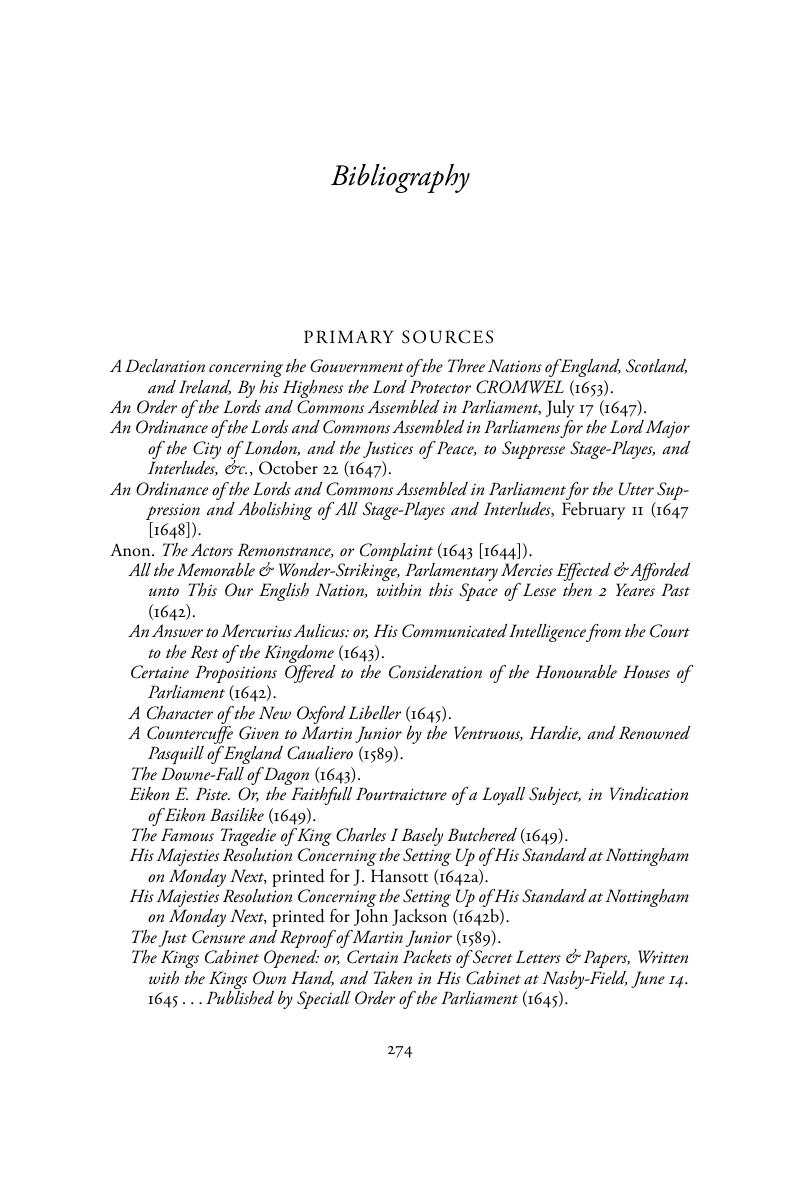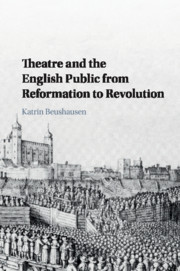Book contents
- Theatre and the English Public from Reformation to Revolution
- Theatre and the English Public from Reformation to Revolution
- Copyright page
- Dedication
- Contents
- Figures
- Acknowledgements
- A Note on Texts and Editions
- Abbreviations
- Prologue
- Chapter 1 Styles of the Stage
- Chapter 2 From Audience to Public
- Chapter 3 Public Performances
- Chapter 4 Playing with Prohibition
- Epilogue
- Bibliography
- Index
- References
Bibliography
Published online by Cambridge University Press: 12 April 2018
- Theatre and the English Public from Reformation to Revolution
- Theatre and the English Public from Reformation to Revolution
- Copyright page
- Dedication
- Contents
- Figures
- Acknowledgements
- A Note on Texts and Editions
- Abbreviations
- Prologue
- Chapter 1 Styles of the Stage
- Chapter 2 From Audience to Public
- Chapter 3 Public Performances
- Chapter 4 Playing with Prohibition
- Epilogue
- Bibliography
- Index
- References
Summary

- Type
- Chapter
- Information
- Theatre and the English Public from Reformation to Revolution , pp. 274 - 295Publisher: Cambridge University PressPrint publication year: 2018



